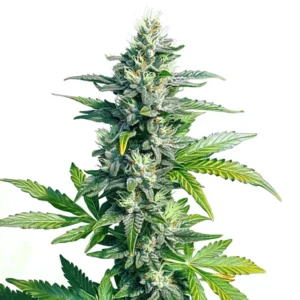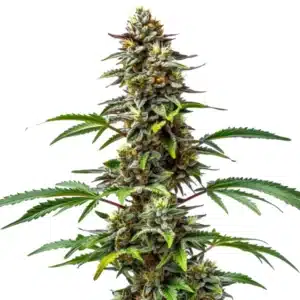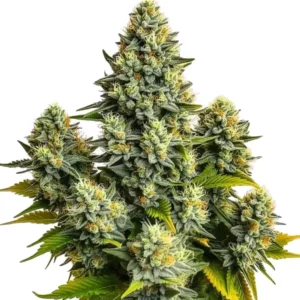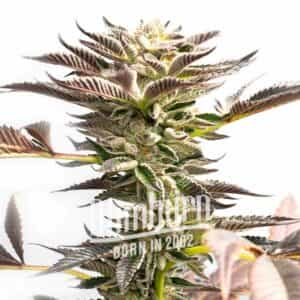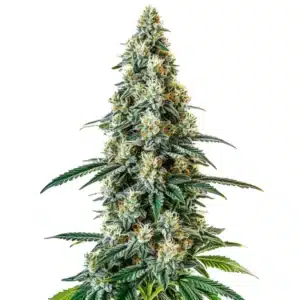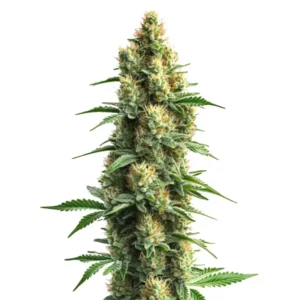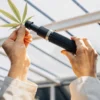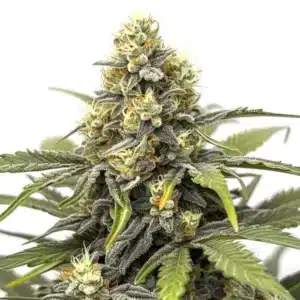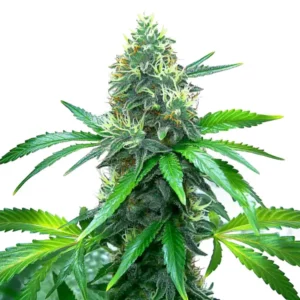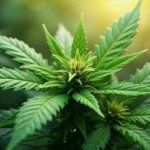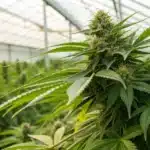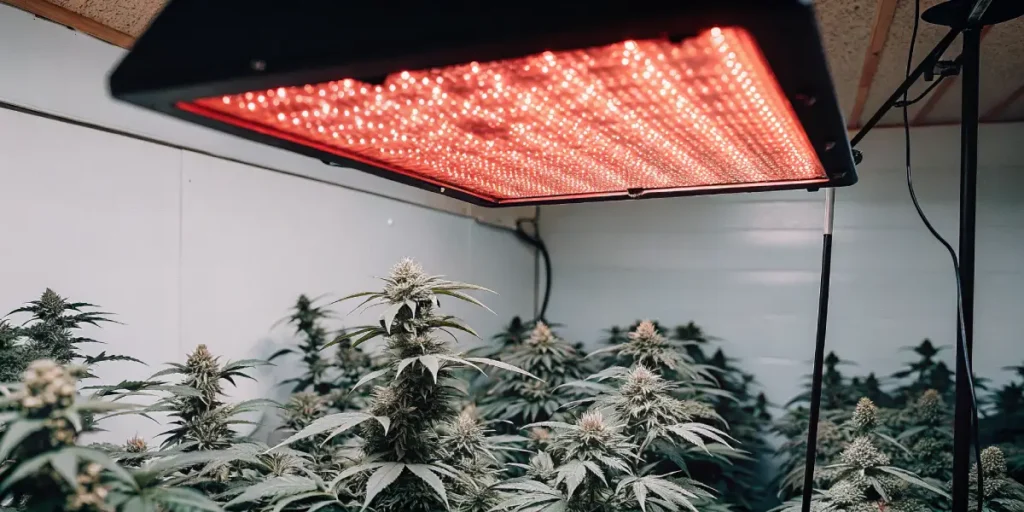
Cannabis Hormones and Photoperiod: Key Insights for Growers
When it comes to growing cannabis, the interplay between hormones and photoperiod is crucial. Cannabis hormones and photoperiod work together to influence how your plants grow and develop. These elements decide when your plants will start flowering, how they will respond to light, and ultimately, how much yield you’ll harvest.
Hormones are like the body’s messengers. In cannabis, they tell the plant when to grow leaves, when to flower, and when to rest. Photoperiod refers to the amount of light and darkness your plants receive. Together, they can make or break your growing efforts. Getting these factors right can boost your yield and quality.
Recommended Strains
MK Ultra
|
|
THC | 17% - 20% (Medium) |
|
|
Type | Feminized |
|
|
Yield | Medium |
|
|
Phenotype | 80% Indica / 20% Sativa |
CBD Tutti Frutti (1:15)
|
|
CBD | 16% – 20% (Medium) |
|
|
Type | CBD Feminized |
|
|
Yield | Low |
|
|
Phenotype | 60% Indica / 40% Sativa |
Consider strains like Critical Mass, which are responsive to light changes. These strains can benefit greatly from proper hormone and photoperiod management, ensuring you get the best out of your growing season.
How Hormones Influence Cannabis Growth
Hormones in cannabis are responsible for several growth stages. One key hormone is auxin, which helps the plant grow upwards and develop leaves. Another important hormone is gibberellin, which promotes stem elongation. Knowing how these hormones work can help you manipulate your plants for better results.
Cannabis flowering hormones influence the timing and quality of the buds. Cytokinins encourage cell division, while ethylene plays a role in flowering and fruit ripening. By knowing how these hormones act, you can time your interventions for optimal growth. For instance, introducing a dark period can trigger flowering in certain strains.
Moreover, the balance of these hormones can be affected by external factors such as nutrient availability, temperature, and stress. By controlling these factors, growers can create an environment where cannabis hormones and photoperiod work harmoniously to promote healthy growth. Consistent monitoring and adjustment are key to maintaining this balance.
Additionally, knowing the synergistic relationship between different hormones can offer deeper insights. For example, the interaction between auxins and cytokinins can determine the plant’s focus on root or shoot growth. By harnessing this knowledge, growers can strategically prune or train plants to maximize light exposure and resource allocation.
Promos & Deals
Effects of Photoperiod on Cannabis Growth
Photoperiod is simply the amount of light your plants receive in 24 hours. It’s a signal that tells your plants what season it is and how they should behave. During the vegetative stage, cannabis typically thrives under 18 hours of light and 6 hours of darkness. This mimics long summer days, promoting growth.
When it comes to flowering, the effects of photoperiod on cannabis growth become even more critical. Switching to a 12/12 light cycle can trigger flowering. This is like telling the plant that autumn is here, time to produce buds. Strains such as Amnesia are known to react well to this change, offering robust flowering when conditions are right.
The effects of photoperiod on cannabis growth extend beyond just the flowering phase. During the vegetative stage, a stable light cycle helps maintain plant vigor and prevents stress-related growth delays. These consistent light patterns also support the plant’s internal clock, ensuring that growth processes such as photosynthesis and nutrient uptake are optimally timed.
Besides to affecting growth, photoperiod can influence the plant’s resistance to pests and diseases. A well-managed light cycle can enhance the plant’s natural defenses, making it less susceptible to external threats. Thus, mastering the art of photoperiod management is essential for both yield and plant health.
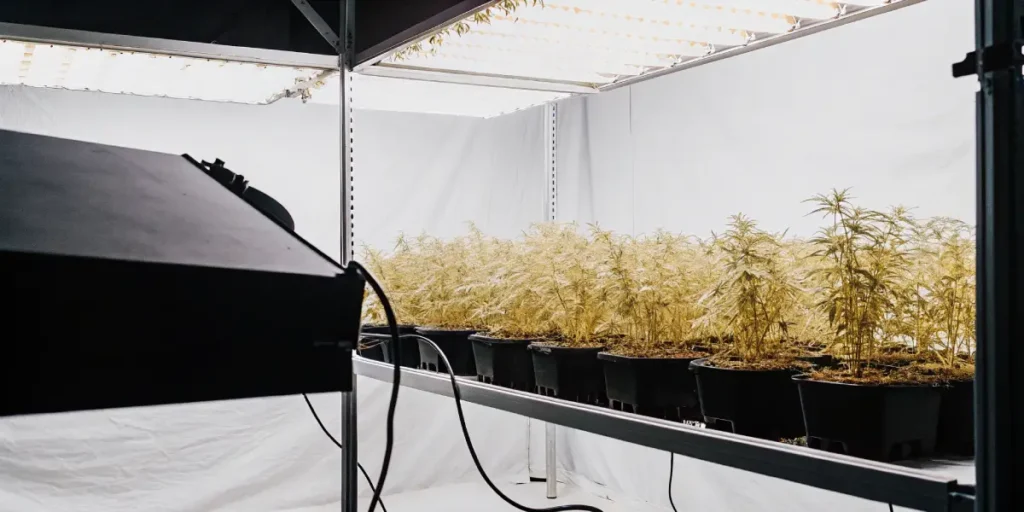
Optimizing Cannabis Yield with Light Cycles
Optimizing cannabis yield with light cycles is not just about flicking a switch. It involves timing and precision. During the vegetative stage, more light equates to more growth. However, once you switch to flowering, less light signals the plants to produce flowers. This balance is essential for maximizing yield.
Using a timer can help maintain consistent light cycles. This ensures your plants get the right amount of light and dark periods. Additionally, strains like Gelato can yield excellent results when exposed to well-regulated light cycles. Adjusting your light setup can make a significant difference in the size and quality of your harvest.
Moreover, optimizing cannabis yield with light cycles involves knowing the specific needs of each strain. Some strains may require longer periods of darkness to initiate flowering, while others might thrive with shorter dark periods. Experimenting with different light cycles can reveal the optimal conditions for each strain, leading to improved yield and quality.
Furthermore, the integration of supplemental lighting can enhance yield outcomes. By strategically using additional lights during cloudy days or in inadequate natural light situations, growers can ensure their plants receive the optimal amount of light. This proactive approach can significantly bolster plant growth and productivity.
The Interplay Between Cannabis Growth Stages and Hormonal Changes
Cannabis goes through several growth stages: germination, seedling, vegetative, and flowering. Each stage is controlled by different hormonal changes. During germination, hormones signal the seed to sprout and push through the soil. In the seedling stage, hormones focus on developing roots and leaves.
As the plant enters the vegetative stage, growth hormones like auxins and gibberellins take charge. These hormones encourage the plant to grow taller and develop a robust structure. More leaves mean better photosynthesis, which is the process of converting light into energy.
The cannabis growth stages and hormonal changes are intricately linked, with each stage setting the foundation for the next. During the flowering stage, hormonal changes become particularly pronounced, with an increased production of ethylene and cytokinins. These hormones drive bud development, critical for a successful harvest.
Additionally, cannabis photoperiod hormone regulation becomes vital as the plant transitions through each stage. The interplay between light schedules and hormonal responses ensures that each growth phase is executed smoothly. By mastering this interplay, growers can achieve optimal plant development and a bountiful harvest.
Practical Tips for Managing Cannabis Hormones and Photoperiod
Managing cannabis hormones and photoperiod can seem daunting, but a few practical tips can make a difference. Start by choosing the right strain for your environment and goals. Some strains are more forgiving and easier to manage than others.
- Use timers to maintain consistent light cycles.
- Monitor plant responses and adjust light conditions as needed.
- Experiment with different strains to find what works best.
- Keep a grow diary to track changes and outcomes.
- Consult with other growers to share insights and tips.
Another tip is to observe your plants closely. Changes in leaf color or growth patterns can indicate hormonal imbalances. By keeping a close eye, you can make necessary adjustments to light or nutrient levels. This proactive approach can prevent issues before they escalate.
Additionally, knowing the specific requirements of your chosen strain can aid in managing cannabis hormones and photoperiod effectively. Some strains may be more sensitive to light changes, while others might require specific nutrient profiles to thrive. Tailoring your growing practices to the unique needs of your plants can result in healthier growth and higher yields.
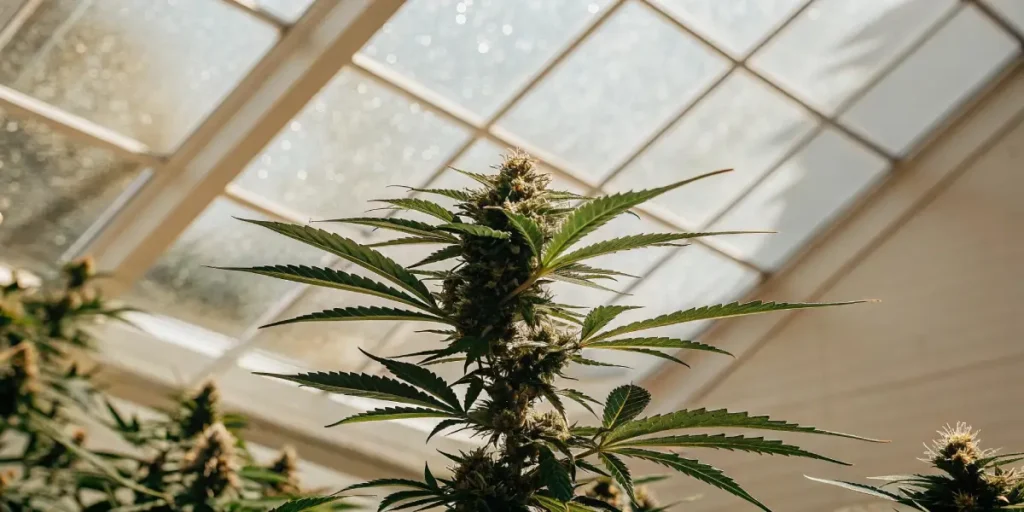
FAQs About cannabis hormones and photoperiod
What are cannabis hormones and photoperiod?
Cannabis hormones are chemical messengers that control growth, development, and reproduction. They influence everything from seed germination to flowering. Photoperiod, on the other hand, refers to the amount of light and darkness a plant receives in 24 hours. It acts as a signal, telling the plant what season it is and how it should respond.
Together, cannabis hormones and photoperiod play a crucial role in determining how well a plant grows and develops. By managing these factors effectively, you can optimize growth, enhance yield, and improve the quality of your cannabis plants.
Furthermore, the synergy between cannabis hormones and photoperiod can be leveraged to fine-tune plant responses. This includes adjusting light cycles to synchronize with hormonal changes, thus enhancing growth and flowering efficiency. Knowing this relationship is key to successful cannabis cultivation.
Additionally, research into cannabis hormones and photoperiod continues to evolve, offering new insights and techniques for growers. Staying informed about the latest advancements can provide valuable strategies for enhancing plant performance and achieving superior harvests.
How do cannabis flowering hormones influence plant growth?
Cannabis flowering hormones influence the plant’s transition from vegetative growth to flowering. They help regulate the timing and quality of bud production. Cytokinins, for example, encourage cell division, while ethylene is involved in flower and fruit maturation.
By knowing these hormones, you can better manage the flowering process. Controlling light cycles to trigger hormone production can ensure your plants flower at the right time, resulting in a more fruitful harvest.
The influence of cannabis flowering hormones extends beyond just timing. They also affect the size, density, and potency of the final buds. By optimizing the hormonal environment, growers can achieve superior bud quality and maximize the plant’s genetic potential.
Moreover, the interaction between cannabis flowering hormones and environmental conditions can further influence plant growth. Factors such as temperature, humidity, and nutrient levels can impact hormone activity, making it essential to maintain optimal growing conditions throughout the flowering phase.
What are the effects of photoperiod on cannabis growth?
The effects of photoperiod on cannabis growth are significant. During the vegetative stage, longer light periods (18/6) encourage growth and development. This simulates long summer days, which are ideal for vegetative growth.
When it comes to flowering, a shorter light period (12/12) is needed. This mimics the autumn season, prompting the plant to start flowering. Knowing and managing photoperiods can help maximize yield and improve plant health.
Besides to growth, the effects of photoperiod on cannabis growth can influence the plant’s chemical composition. The right light schedule can enhance cannabinoid and terpene production, leading to more potent and flavorful buds.
Furthermore, managing photoperiods effectively can reduce plant stress and improve overall resilience. Consistent light cycles support the plant’s internal rhythms, reducing the likelihood of developmental anomalies and ensuring robust growth from seedling to harvest.
How can I optimize cannabis yield with light cycles?
Optimizing cannabis yield with light cycles involves precise control and timing. Start with a longer light period during the vegetative stage to encourage growth. As the plant matures, switch to a 12/12 light cycle to trigger flowering.
Using timers can help maintain consistent light cycles, ensuring your plants receive the correct amount of light and darkness. This method not only boosts yield but also enhances the quality of your cannabis buds.
Additionally, optimizing cannabis yield with light cycles requires knowing the specific needs of your plants. Some strains may benefit from a gradual transition from vegetative to flowering light cycles, rather than an abrupt change. This gradual shift can minimize stress and promote smoother development.
Another strategy is to incorporate light cycle manipulations during the flowering phase. Techniques such as extending the dark period towards the end of flowering can enhance resin production and accelerate maturation, resulting in higher-quality buds.
What changes occur during cannabis growth stages and hormonal changes?
During cannabis growth stages, various hormonal changes occur. In the germination stage, hormones trigger the seed to sprout. As the plant transitions to the seedling stage, hormones focus on root and leaf development.
In the vegetative stage, growth hormones like auxins and gibberellins promote stem elongation and leaf production. Finally, in the flowering stage, hormones like ethylene and cytokinins are crucial for bud development. Knowing these changes can help you manage each stage more effectively.
The cannabis growth stages and hormonal changes are a dynamic process, with each stage building upon the previous one. During flowering, hormonal shifts become particularly critical, influencing bud formation and maturation. By closely monitoring these changes, growers can make informed decisions to support optimal plant health and productivity.
Furthermore, cannabis photoperiod hormone regulation plays a pivotal role in aligning growth stages with environmental cues. By adjusting light cycles to coincide with hormonal transitions, growers can create seamless transitions between growth stages, ultimately enhancing yield and quality.


